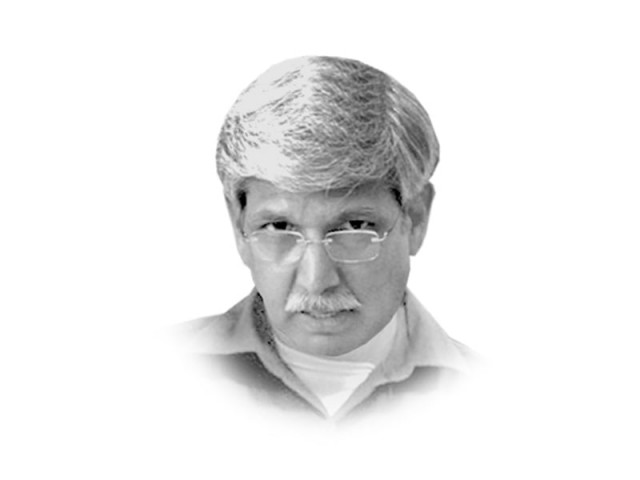
I first arrived in the US in 1985 on my maiden trip abroad to Texas where everything confounds proportion. That was when I first heard and saw the term “God’s own country” written on huge billboards and windscreen stickers. As I sampled America, I began to understand why America was — and seemed to itself — ‘chosen’ and ‘special’. It was an appropriate and prescient emblem of America’s greatness.
Since then, I have travelled to America frequently, almost all trips being work related, except for the last two, which have been purely private in nature, and some Track II. And I see a different America; an America that is not so sure of itself and is losing the certainty of thinking that it is ‘special’ and ‘chosen’. It seems like an America that knows it will struggle to retain a spot at the head of the race. I see a lot more Chinese influence with their increased presence and how America tends to open up to them almost in reverence. The two languages in which signpost directions are most frequently spotted in airports of some major cities are English and Chinese. Indians, who study and live in America in great numbers, they don’t need another language to communicate. Governors of two states are of Indian-origin, and both are Republican. Indian influence on American policymaking is unmistakable with the process clothed in words that may seem to have been coined in Delhi’s South Block — not that they are, but they are strikingly similar, and on crucial issues I might add. They say every third person in the State Department is of Indian origin; perhaps an exaggeration, but you get the drift.
Pakistanis exist in reasonable numbers, though nowhere close to the Indians, but get subsumed in a larger Asian denomination. Most exist at the low rungs of the work ladder as labour and shopkeepers. Doctors are the only exception who keep some hope alive with their dignified presence but are too disappointed in the direction their country has taken in the last some years to pursue any coherent interests as a unified group. Pakistan’s major textiles export to the US is cotton and cotton products, but given the current trends where most of what Pakistan produced is now India-made, it is quite evident Pakistan is now a has-been in America.
For this and other reasons, America in spots seems Asiatic or Hispanic. The overwhelming white predominance that ruled when I first began to travel here has almost retreated to some hidden spaces in the countryside. The professional is bound to be for most part an Asian, and religion of all hues is now much more visible. Racism has receded somewhat, except in specific white pockets. A recent spate of attacks on some Sikh and Muslim holy places is considered an expression of indigenous frustration with how the society seems to have changed composition than stereotypical racism. The politics, too, has tended to reflect the trend in its newer manifestation. At Republican Party Convention one had to strain to pick up a face that wasn’t white; the division is so complete. The composite other, the Democratic Party, thus seems set to benefit from a more wholesome representation.
In such an America, Afghanistan and Pakistan remain a specific interest of those dealing with it in the administration. The books and the stories that come out on our region are leaked by the same principals who work the policy and are thus guided by the effects that policy wonks need. There is a clear indication of insufficient interaction between the US and Pakistan at a senior enough level in the governments to harmonise policies and create a consensus roadmap to resolve Afghanistan. The Americans seek such a resource which could help them start negotiations with the Taliban. They also seem to be struggling with the blueprint on bringing peace to Afghanistan, though I was assured that one is under work. Their major concern is the time available before December 2014 which they count in months, 26, before which peace has to be brought to Afghanistan, in direct contravention of the belief in Pakistan that the current administration is unlikely to do anything till January 2013 because of its lame duck status. To these principals, time is of immense essence and a solution to Afghanistan a bipartisan American objective.
America’s need for Pakistan to bring closure on Afghanistan is pretty obvious and is explicitly stated, though they will continue to fear extremism in a nuclear country with tenuous stability. If Pakistan were to continue to peddle only a one-sided military to military relationship, without attention to the politics of peace, we will find ourselves hopelessly behind the time and event curve in finding peace in Afghanistan and stability in Pakistan. This strange element of disinterest and laissez faire that we dwell in beats me. There is space to help America create a blueprint of peace and a framework for agreement between various players of a likely peace process, including regional stakeholders. There is critical space we can fill which otherwise may simply go to someone else. Nature abhors a vacuum. Else, our worst fears of holding the baby, the bathtub and whatever else goes with it, may just become a self-fulfilling prophecy.
Published in The Express Tribune, September 11th, 2012.













COMMENTS
Comments are moderated and generally will be posted if they are on-topic and not abusive.
For more information, please see our Comments FAQ